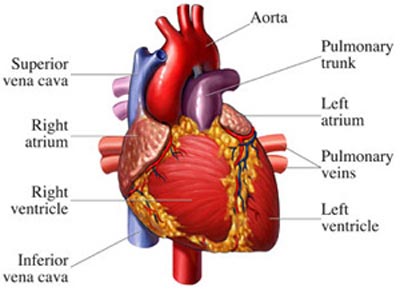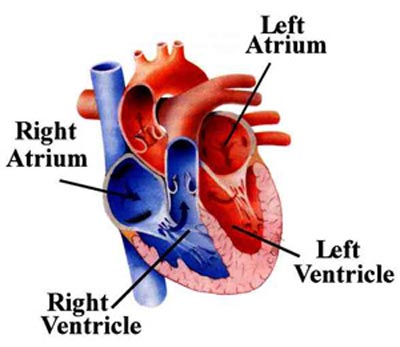In July 1993, Reggie Lewis, the 27 years old NBA All-Star champion basketball player collapsed suddenly during a Boston Celtics practice game. He suffered from an expected cardiac failure.
Korey Stringer of Minnesota Vikings was also 27 when he collapsed in August 2001 during his football training camp as a result of a sudden heart stroke.
During the 2003 FIFA Confederations Cup semifinal, Marc Vivien Foe, the 28 years old Cameroonian football star, collapsed on the field as a result of heart muscle disorder.
And, in 2007, Antonio Puerta, Sevilla FC midfielder, was 22 years old when he suffered from a cardiac arrest on the field during a home match.
Scary, isn’t it? We all learnt that physical exercises and regular training strengthen the heart. So, what’s going on here? Why are these athletes’ hearts failing them?
In an attempt to find the answer, we need first to know how does our body fuel exercise.
During moderate training, our body gets its needed energy mainly through burning glucose and fatty acids to produce Aadenosine-5′-triphosphate (ATP), which regulates the energy currency in our cells. The required glucose comes from the glycogen stores in the muscles and the fatty acids from the fat stored in the body.
At this time, the intensity of the exercise is low enough to enable our heart and lungs to deliver enough oxygen to the cells for energy production. This is thus called aerobic training where each burnt glucose molecule yields 38 molecules of ATP.
When the training intensity gets higher, though, the efficiency of oxygen delivery to our cells decreases, so the cells shift to what is called anaerobic metabolism where they can only use glucose and not fats to produce ATP molecules.

Athletes’ hearts become bigger and stronger with highly efficient blood circulation and energy production system to sustain their high intensity training.
The energy production here gets much less efficient. Burning of one glucose molecules yields only two ATP molecules and results in a byproduct of lactic acid which, when accumulated in enough concentration, leads to our experience of muscle aches and fatigue.
For athletes, as they train regularly and in progressively higher intensity, their heart muscle becomes bigger and stronger which makes it more efficient in pumping oxygenated blood to their body muscles.
Their cells capacity to burn fats also increases with time; and their muscles become able to store more glycogen and to use it more slowly and effectively to fuel their training.
These physiological changes enable athletes to sustain exercise for a longer period of time without experiencing muscle aches or fatigue.
So, back to our athletes’ hearts. As we saw, athletes’ hearts become bigger and stronger with highly efficient blood circulation and energy production system to sustain their high intensity training. This stronger heart needs higher protection and more efficient maintenance than an average person’s heart. This could only be achieved through adequate nutrient supply.
Our body has an amazing ability of self-healing and maintenance; it just needs a constant supply of the right ingredients.
Athletes go through exhausting trainings and physical strains that push them to their mental and physical limits and put so much burden on their precious heart muscle. Their nutritional needs, especially from heart-protective micronutrients (vitamins and minerals) are higher than that of an average person.
Heart-Protective Micronutrients

Vitamin B complex which comprises a whole range of B vitamins is essential for energy production as well.
Thiamine (Vitamin B1) is an active agent in the health of the cardiovascular and nervous system and it plays an essential role in energy production by the cells. It is found in liver, organ meat, and whole grains.
Iron is also essential for the production of the hemoglobin of the red blood cells which is responsible for oxygen transportation. In addition, it’s essential in the production of myoglobin in the muscles which is needed for ATP production. It is found in red meat, blackstrap molasses, and black beans.
Vitamin B complex which comprises a whole range of B vitamins is essential for energy production as well. We already mentioned one of them, thiamine, for its specific importance. Others include Vitamin B2 (Riboflavin) that is found in milk and dairy, organ meat and green leafy vegetables.
Poultry, fish, beef, peanuts and legumes could also provide you with Niacin.
While you could consume Vitamin B6 (Pyridoxine) through chicken, fish, organ meat, whole grains, nuts and legumes.
Concerning Folate, the leafy greens, lentils, beans, and broccoli are significant suppliers of it.
Eggs, milk and dairy, fish, meat and poultry are also excellent nutrients which could provide you with Vitamin B12.
Regarding Biotin, it’s found in eggs, liver and whole grains. On the other hand, we could get our natural doses of Pantothenic acid via grains, meat, fish, poultry, milk and legumes.
Calcium isn’t only essential for building and protecting our bones, but it is also a main factor in muscle contraction and heart beat regulation. Actually, an increasing demand on calcium to support heart work during training might put the athlete at the risk of depleting their bones structure. Calcium is best absorbed from milk and dairy. It is also found in dark green leafy vegetables, sesame seeds, and in fish with edible bones like mackerel, sardines and canned salmon.
On its behalf, Magnesium works with calcium in balancing muscle relaxation and contraction, including the heart muscle. It is found in green leafy vegetables, legumes, nuts and grains.
Selenium is a powerful antioxidant that protects the cells from damage and especially protects the heart muscle. It is found in fish and seafood, organ meat, chicken, seeds, eggs, peanuts, brewer’s yeast, garlic and whole grains like brown rice.

Iron is essential in the production of myoglobin in the muscles which is needed for ATP production.
Coenzyme Q10 which is known as Ubiquinone as well is essential for proper blood circulation, cell oxygenation and cardiovascular system protection. It is found in organ meat, avocados, beef, peanuts, spinach, fish and seafood.
Additionally, water and adequate hydration is essential in maintaining heart health. If the athlete becomes dehydrated through sweat, his/her blood volume decreases pushing the heart to work harder in pumping the oxygenated blood to the cells.
As we saw, the nutritional needs for athletes that ensure their heart maintenance could be met by a well-balanced and closely monitored diet.
Although in some cases supplements might help, they can never compensate for a healthy eating regimen. There is still so much mystery in foods that science hasn’t yet unraveled.
It is important to note here that athletes on restricted calorie diet, like ballerinas and gymnasts, or those who try to lose weight, might be at risk of nutritional deficiency. A choice of nutrient dense low calorie food and a supportive supplement regimen might be necessary.
This article was first published in 2013 and is currently republished in light of the 4th Islamic Solidarity Games.